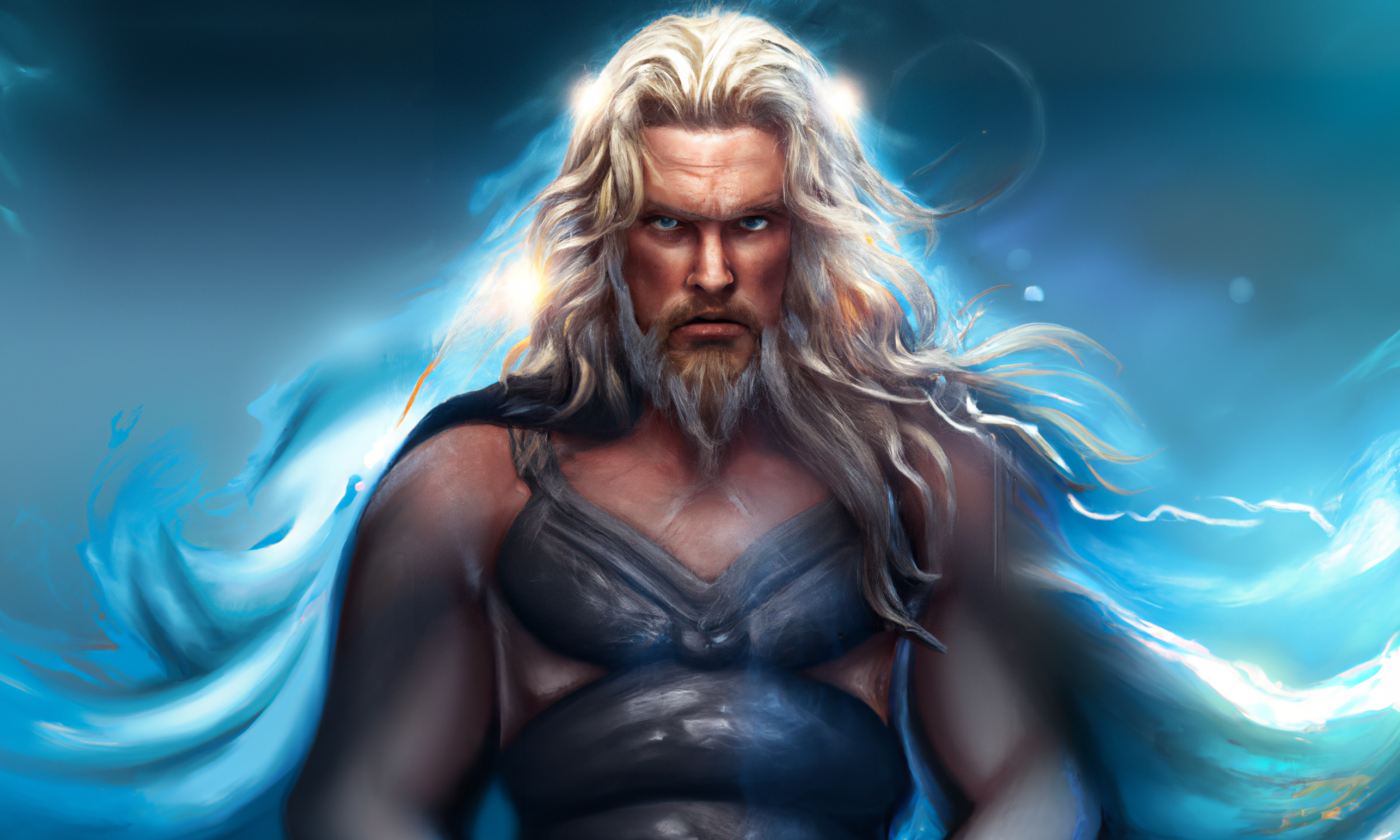MJOLNIR
Mjölnir, the Thunderous Hammer:
Mjölnir, an emblematic artifact from Norse mythology, stands as an iconic representation of power and strength. This imposing weapon, the hammer belonging to Thor, the deity of thunder and lightning, is renowned for its formidable capacity to generate thunder and lightning under Thor's mastery. The origins of Mjölnir can be traced back to a crafty endeavor initiated by Loki, the notorious trickster god. He instigated a bet with the gifted dwarves Brokkr and Eitri, challenging them to forge a weapon surpassing the existing armament of the gods, and staked his own head in the gamble. Rising to the challenge, the dwarves masterfully crafted Mjölnir, embedding it with enchanting properties like the ability to return to Thor's hand post-throw and to conjure thunder and lightning, thereby giving physical form to Thor's elemental power. Mjölnir encapsulates the essence of Thor's formidable strength and portrays his role as the valiant defender of gods and humankind. Armed with this mighty hammer, Thor engages in combat with colossal giants, menacing monsters, and other existential threats, safeguarding the realms from chaos. The immense power housed within Mjölnir weaves a critical thread in the tapestry of events that culminate in the cataclysmic event known as Ragnarok.
Mjölnir features predominantly in various sagas of Norse mythology, particularly those that narrate Thor's audacious conflicts with formidable adversaries. For instance, Thor wields the hammer to claim victory over the towering giant Hrungnir, and it proves to be an invaluable weapon in his conflict with Jörmungandr, the colossal serpent, during the ominous unfolding of Ragnarok, the prophesied end of the world in Norse cosmology. Another fascinating tale involving Mjölnir chronicles its theft by Thrym, a giant of remarkable strength. This audacious act forces Thor to assume the disguise of the goddess Freyja to infiltrate Jotunheim, the homeland of the giants, in a daring bid to reclaim the stolen hammer. The moniker "Mjölnir" is thought to be rooted in Old Norse, with potential interpretations pointing towards the hammer's devastating potential and meteorological associations. One interpretation suggests "crusher" or "smasher," in line with the destructive force Mjölnir unleashes, while another proposes "lightning," tying it to the elemental force of nature it wields, as it is said to generate thunder upon striking the ground.
To encapsulate, Mjölnir, Thor's formidable hammer, resonates as an emblem of raw might and unwavering protection, symbolizing the sheer potency of Thor and his celestial role as the guardian of both deities and humankind. Its unique magical attributes, coupled with its central involvement in epic confrontations with towering enemies, illuminate the primacy of courage, resilience, and indomitable will when grappling with seemingly insurmountable odds. Emerging as a recurring protagonist across the expansive canvas of Norse mythology, Mjölnir features prominently in a plethora of narratives. Most notably, it plays a critical role in the tales recounting Thor's relentless encounters with the giants and other formidable foes. The narratives spotlight its indispensability as Thor's weapon of choice, underscoring Mjölnir's intrinsic value within the mythological universe. Its intimate involvement in these accounts serves to further amplify its relevance and importance within Norse mythology. Mjölnir's profound role in Norse mythology extends beyond its status as a powerful weapon—it is also an emblem of Thor's strength and vigor. Its association with elemental forces, such as thunder and lightning, contributes to the aura of mystique that enshrouds it. Moreover, this link reflects the Norse understanding of natural phenomena and their belief in the divine influence over these elements.
Other Readings:





